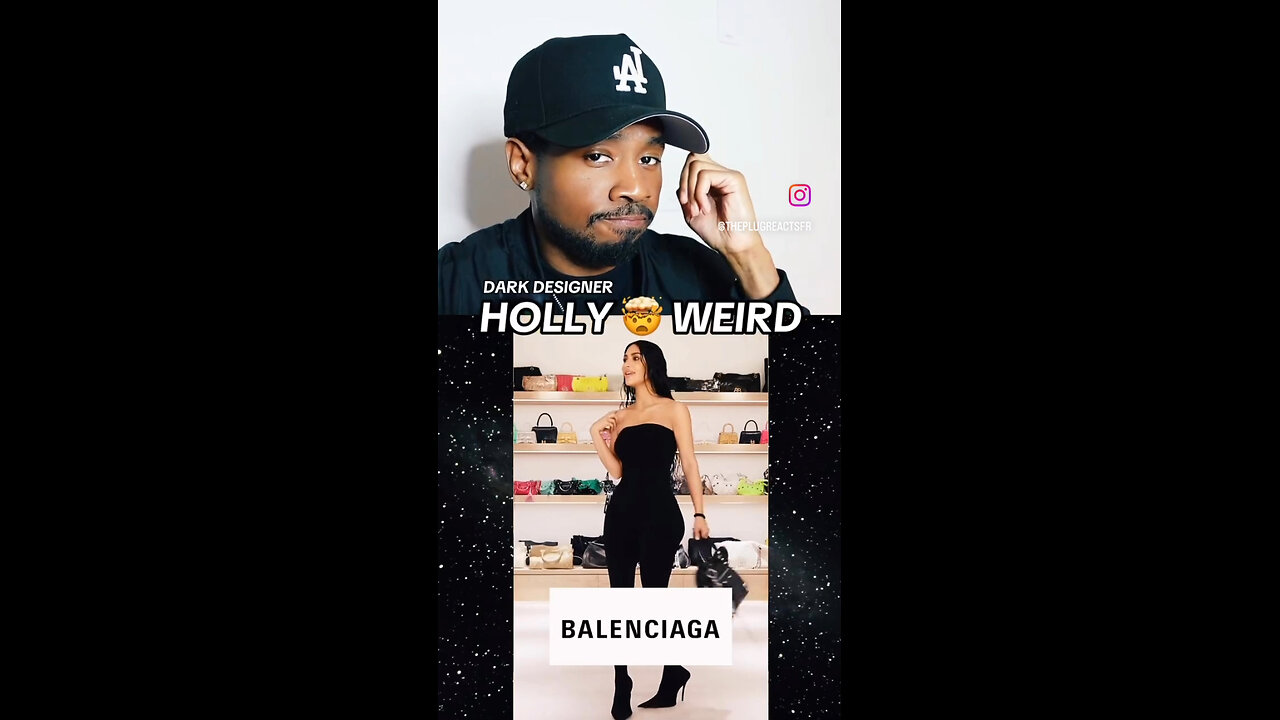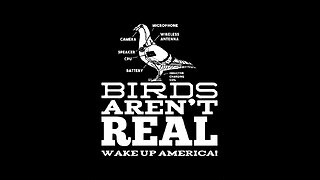Premium Only Content

The Dark Side of Luxury: The True Cost of High-End Fashion
Introduction: The Allure and Illusion of Luxury
Luxury brands like Louis Vuitton, Dior, and Chanel have long been symbols of status, wealth, and exclusivity. Their products—bags, shoes, clothing—are marketed as the pinnacle of quality and craftsmanship. But behind the glittering storefronts and iconic logos lies a sobering reality: the actual cost to produce these items is often a fraction of their retail price.
In this article, we’ll explore the economics of luxury fashion, the psychological and societal factors driving its allure, and the growing backlash against the industry’s exploitative practices. Finally, we’ll examine why buying secondhand or rejecting the luxury cycle altogether can be a more ethical, sustainable, and empowering choice.
1. The Economics of Luxury: Markup vs. Manufacturing
1. The Dior Investigation
• A recent Italian investigation revealed that a Dior handbag, retailing for at least $2,780, costs approximately $57 to produce. This staggering markup underscores the industry’s reliance on perceived value rather than actual production costs.
• While labor, marketing, and overhead contribute to pricing, the profit margins on luxury goods remain astronomical.
2. The Role of Brand Value
• Luxury brands justify high prices by emphasizing exclusivity, heritage, and craftsmanship. However, many products are mass-produced in factories, often using materials and labor no different from mid-tier brands.
• The price tag is less about quality and more about the prestige of the logo.
3. Who’s Paying the Price?
• Consumers often go to extreme lengths—taking on debt, sacrificing savings, or even engaging in exploitative practices—to afford luxury items. The emotional and financial toll of keeping up with luxury standards often outweighs the fleeting satisfaction of ownership.
2. The Psychological Pull of Luxury
1. Status and Identity
• High-end fashion plays on deep-seated psychological desires. Owning a luxury item is often seen as a marker of success, social standing, and self-worth.
• The idea that a bag or pair of shoes can “say something” about who you are is a powerful narrative perpetuated by clever marketing.
2. The Myth of Exclusivity
• Brands cultivate an image of scarcity and exclusivity, creating artificial demand. Limited editions, long waiting lists, and high prices all contribute to the allure, making consumers feel they are part of an elite group.
• In reality, many luxury items are readily available and mass-produced, undermining the exclusivity myth.
3. Emotional Manipulation in Advertising
• Advertisements for luxury goods often evoke feelings of aspiration, envy, and desire. By associating their products with ideals of beauty, success, and happiness, brands tap into consumers’ insecurities and ambitions.
3. The Hidden Costs of Luxury: Ethical and Environmental Concerns
1. Labor Practices
• While luxury brands tout their commitment to quality, the reality of their supply chains often includes underpaid workers, poor working conditions, and outsourcing to low-cost countries.
• The $57 production cost of a $2,780 bag raises questions about how much of that amount actually goes to the workers who create these products.
2. Environmental Impact
• The fashion industry is one of the largest polluters globally, and luxury brands are not exempt from this. The production of leather, dyes, and synthetic materials leaves a significant carbon footprint.
• Excessive packaging and limited recycling options for high-end products further exacerbate the environmental toll.
3. Consumer Exploitation
• By selling the illusion of status and self-worth, luxury brands exploit consumers’ insecurities. The financial sacrifices made to purchase these items often leave people in debt, perpetuating a cycle of consumerism that benefits the brands but harms individuals.
4. Breaking the Cycle: Alternatives to the Luxury Obsession
1. Buy Secondhand
• Purchasing pre-owned luxury items is a more sustainable and ethical way to enjoy high-end fashion. Platforms like The RealReal, Vestiaire Collective, and Poshmark offer authenticated secondhand luxury goods at a fraction of their retail price.
• This approach not only reduces waste but also challenges the industry’s reliance on inflated markups.
2. Focus on Quality, Not Branding
• Many independent designers and mid-tier brands offer high-quality products without the luxury price tag. By prioritizing craftsmanship over logos, consumers can find value without succumbing to marketing tactics.
3. Reassess What Matters
• Ask yourself: What does this product truly represent? Is it a genuine need, or is it about external validation?
• Redirecting energy and resources toward experiences, personal growth, or meaningful goals can be far more fulfilling than owning a designer bag.
4. Support Ethical and Sustainable Brands
• Look for brands that prioritize transparency, fair labor practices, and environmental sustainability. Supporting these companies shifts the focus from status to conscious consumerism.
5. The Cultural Shift: Redefining Value and Success
1. The Rise of Minimalism
• As more people embrace minimalism and sustainable living, the appeal of high-end luxury is waning. Consumers are beginning to value experiences and personal fulfillment over material possessions.
2. Empowering Conversations
• Stories like the one shared by the mother in this anecdote are crucial for raising awareness about the true cost of luxury. By sharing lessons learned, individuals can help shift cultural attitudes away from superficial status symbols.
3. The Power of Collective Change
• The luxury industry thrives on consumer demand. By collectively rejecting unethical practices and focusing on sustainable alternatives, consumers can drive meaningful change in the fashion world.
Conclusion: Redefining Luxury in a Modern World
Luxury doesn’t have to mean exploitation, unsustainable practices, or inflated prices. True luxury is about quality, integrity, and value—both for the consumer and for those who produce the goods. As the public becomes more aware of the hidden costs of high-end fashion, a cultural shift is underway, one that prioritizes conscious consumerism over empty status symbols.
The next time you consider a designer bag, ask yourself: What story am I buying into? By choosing authenticity, sustainability, and ethical practices, you can redefine what luxury means—not just for yourself, but for the world.
-
 6:52
6:52
FragmentsOfTruth
3 hours agoBirds Aren’t Real? The Shocking Truth About Spy Drones in Disguise
52 -
 7:33
7:33
MudandMunitions
1 day agoUnboxing My FIRST Revolver! Smith & Wesson 442 .38 Special and What’s Coming Next for the Channel
82.5K12 -
 1:01:05
1:01:05
Trumpet Daily
1 day ago $10.04 earnedGermany Started Two World Wars and Now Wants Nuclear Weapons - Trumpet Daily | Mar. 7, 2025
69.1K78 -
 57:07
57:07
Stephen Gardner
1 day ago🚨BREAKING: Musk STUNS even Trump with LATEST FRAUD DISCOVERY!!
196K443 -
 2:26:47
2:26:47
FreshandFit
20 hours agoRatchet Chick Gets Kicked Out "Gracefully" For THIS...
190K200 -
 2:05:17
2:05:17
TimcastIRL
23 hours agoDemocrat ACTBLUE In CHAOS, Theories Over DOGE Cutting SLUSH FUND Go Wild w/Hotep Jesus | Timcast IRL
324K284 -
 1:11:43
1:11:43
Roseanne Barr
1 day ago $76.00 earned"They are all Monsters" | The Roseanne Barr Podcast #89
167K199 -
 9:26:16
9:26:16
Dr Disrespect
1 day ago🔴LIVE - DR DISRESPECT - WARZONE - PR ATTEMPTS
193K35 -
 3:48:30
3:48:30
Akademiks
23 hours agoDay 1/30. Lebron checks stephen a Smith. TOry Lanez talking CRAZY asf. Lil Ronnie K*Ilers Caught
126K14 -
 3:47:54
3:47:54
I_Came_With_Fire_Podcast
1 day agoDEPARTMENT OF EDUCATION AXED | GAZA ULTIMATUM
108K35